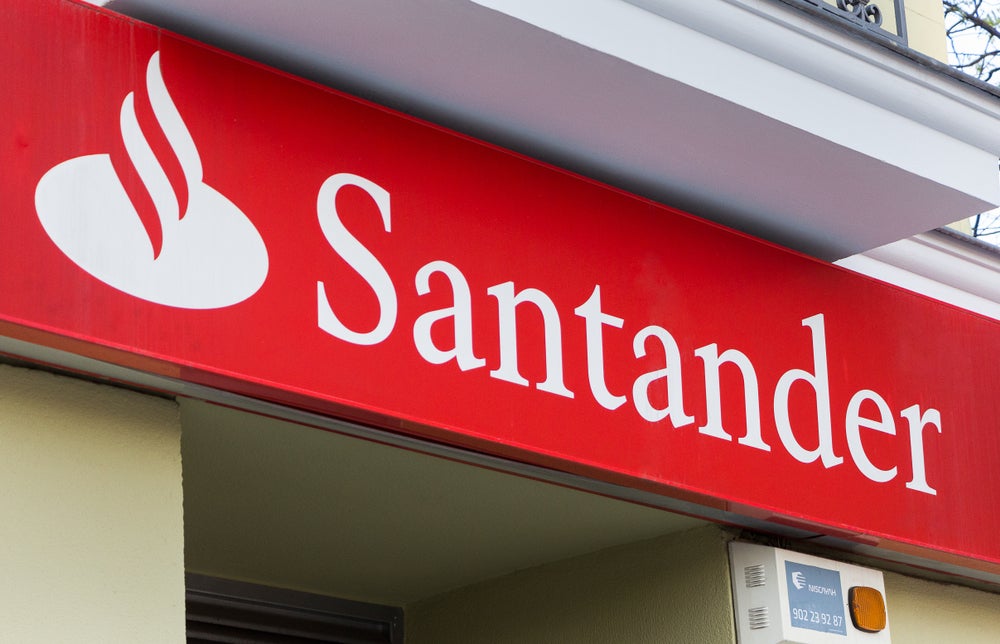Douglas
Blakey talks to Alexey Marey, head of retail banking at Alfa
Bank, Russia’s largest privately owned banking group. While the
bank expects a souring economy to harm its bottom line in 2009, its
retail focus remains on product innovation, superior customer
service and multi-channel investment
Despite increasingly turbulent market conditions, Alfa Bank has
come through the first stage of the global economic crisis,
effectively managing its liquidity, currency and capitalisation
risks.
While retail banking constitutes only around
14 percent of the bank’s overall lending book, Alfa’s retail arm
played its part in the bank’s total assets growth of 19.4 percent
year-on-year to reach $27.1 billion at the end of 2008. Operating
profit grew by 19.8 percent to $1.21 billion for fiscal 2008,
thanks in large part to a significant growth of interest and
commission revenues from its retail unit.

And according to Alexey Marey, Alfa Bank’s
head of retail banking, the economic crisis was not all bad news
for the bank’s retail operation.
“We saw an opportunity in the Urals to improve
significantly our position in the region, by purchasing Severnaya
Kazna, the first full scale acquisition Alfa Bank had made,” he
said, in an interview with RBI.
How well do you really know your competitors?
Access the most comprehensive Company Profiles on the market, powered by GlobalData. Save hours of research. Gain competitive edge.

Thank you!
Your download email will arrive shortly
Not ready to buy yet? Download a free sample
We are confident about the unique quality of our Company Profiles. However, we want you to make the most beneficial decision for your business, so we offer a free sample that you can download by submitting the below form
By GlobalDataAs a result of the purchase last December,
Alfa gained 400,000 retail and 20,000 corporate customers at the
40-branch-strong regional lender, which had suffered a run on its
assets during the height of the credit crunch in the autumn.
It was until around that time that the year
was going perfectly to plan for Alfa with strong growth in customer
numbers, an expanding branch network and a string of retail product
launches, all backed up by innovative marketing campaigns with
which Alfa has become synonymous.
The year ended with a branch network of 268
units, 3 million retail customers and around a 30 percent increase
year-on-year in retail lending, despite the bank slamming the
brakes on lending growth in the fourth quarter.
“In October, we completely revised our
business model,” Marey added.
“Developing retail lending had been a big
volume generator for us but by the autumn, we decided to
concentrate on two lending businesses which we continue to grow and
develop: consumer finance, low ticket, in-store very high margin,
but high-risk lending and our credit card business.”
His confidence in the bank’s ability to focus
on consumer finance stems from Alfa’s investment in IT,
particularly in credit collection, risk and scoring.
As for its current retail lending position,
Marey summarised: “We have pursued growth aggressively… lending
growth is up and delinquencies are down. It has been a very good
time for us.”
While Alfa’s overall retail lending continues
to rise, growth in sectors such as auto loans and mortgages have
dropped off by factors of between three and four compared with a
year ago, as demand has fallen due to consumers’ concerns about
their economic prospects.
As for Alfa’s direct channels, recent growth
has been dramatic.
It finished 2008 with 415,000 active online
banking customers (branded Alfa-Click) compared to 220,000 in 2007
while its mobile banking channel, branded Alfa-Check, grew customer
numbers from 420,000 to 700,000 in the same period.
“We believe the internet is a key channel to
develop and the number of our customers banking online is a good
sign that we are moving in the right direction,” Marey said.
“We compete with international banks with
online platforms recognised worldwide but our advantage is that our
platform was developed by us, especially for Russia.”
As mobile penetration in Russia is considerably higher than levels
of household internet use, the bank believes Alfa-Check has
potential to develop further. Already customers can initiate
transfers and payment by mobile and “we will add additional
services to the channel to give customers better value and greater
control”, Marey promised.
 Product success
Product success
Among the bank’s product successes
of 2008, Marey is particularly proud of the first do-it-yourself
card personalisation offering in Russia, branded My Alfa.
“We launched in October. Looking back, we
could not have chosen a much worse time,” he added. “People were
looking for security, not a customised card, and we made some
initial mistakes in our below the line marketing. But we have now
issued more than 3,000 My Alfa cards, the second wave of online
marketing having gone to plan.
“From taking the decision to roll out the card
to the card launching took only three months and we did it
ourselves which was far faster and cheaper than using a card
technology vendor.”
A 2008 study by consultant
Pricewater-houseCoopers, Who is Winning the Retail Banking Race in
Russia?, which placed Alfa in first place for customer service and
customer experience out of 51 retail banks analysed (see RBI 598)
remains a source of evident pride to Marey; he is likewise keen to
flag up the benefits of the bank’s discount programme.
“It is very simple but definitely one of the
biggest in Russia. It enabled us to run a campaign which said you
can increase your salary by 10 percent with Alfa,” Marey
explained.
To date, more than 2,000 Russian merchants
have signed up to the money-off scheme, which offers Alfa customers
a minimum of 10 percent, and in some cases 15 percent to 20 percent
discounts when they pay by Alfa debit or credit cards.
Russia’s PayPal
A payments scheme, which kicked off
in February and described by Marey as “a little like a Russian
PayPal” is the bank’s latest retail innovation.
Yandex.Money, the largest ruble denominated
online payment system, can now be linked with an Alfa-Bank account
with the joint programme of Alfa and Yandex branded ‘Money: From A
to Ya’.
With more than 3 million Yandex e-wallets in
operation, daily transactions topping 50,000 and more than 1,500
vendors already using the Yandex.Money system, there is huge scope
for the Yandex/Alfa tie-up to grow, neatly getting around concerns
many Russians continue to have about using their credit cards to
shop safely online.
“Transferring real money into electronic
currency and back has never been faster or easier and I believe
that both users of Yandex.Money and Alfa-Bank clients will benefit
from integration of the two online services.”

Three priorities
Going forward, Marey set out three
priorities for the bank’s retail unit in 2009.
• Product innovation will focus on
the liability side in an effort to repeat the bank’s recent deposit
growth success. Until last year, the bank had given term deposits a
low priority, having only two such products. That all changed in
2008 with a number of product launches and an advertising campaign
flagging up Alfa’s financial stability.
According to Marey, this suddenly
offered a persuasive marketing message: “People had not previously
cared much about the security and stability of their bank. However,
in the current climate, people now understand that a number of
banks could lose their licence. Our message was simple – it is
better to have your money with a solid bank you can trust.”
• Secondly, Alfa is determined to
maximise fee and commission income, to compensate for anticipated
reduced earnings from lending. A recent success for the bank has
been soaring income growth from insurance, with commission earnings
up six-fold in the past two years. The bank will also seek to grow
customer numbers and revenue from its direct banking channels –
last year alone self-service revenue doubled.
• The third and predictable
priority, cost control, is already paying off. A round of branch
rent reviews pursued by the bank has resulted in rents being
reduced by not less than 15 percent and as high as 30 to 40 percent
in a number of cases.
On a less positive note, the current economic
climate is likely to slow, if not halt temporarily, Alfa’s recent
branch network expansion. Last year, the bank opened 26 new
branches, including four of its A Club-branded units aimed at the
high net worth segment.
“Even in tough times, there remain a growing
number of rich people in the regions and they require good service
and they are ready to pay for it, which is very good for us,” Marey
said.
So Alfa will continue to look at further
expansion of the A Club network, which offers a dedicated personal
banker and a range of benefits normally associated with a private
bank.

Cross sell from 1.3 to 2, to 4 or 5
A fourth, unspoken priority, would
be an increase in the bank’s cross-sell ratio, arguably one area
where Alfa continues to lag behind banks in more mature markets,
despite its successful multi-channel, service-driven strategy.
In mitigation, Marey argued: “It is very
difficult to give a figure as we do not yet have the IT
infrastructure of banks in the West. In very crude terms, it is
around 2.0 products per person today, up from around 1.3 two to
three years ago.”
In the past year Alfa targeted its expanding
range of term deposit products to its existing customer base, with
mixed results from a cross-sell perspective. While a huge success
in growing total deposits, only around 15 percent to 17 percent of
term deposit customers were found to have another product with the
bank. But, argued Marey, this is quite typical for the Russian
market, term deposits being considered a standalone product.
Looking ahead, he is convinced the bank’s
retail strategy will pay off.
“Some banks here have switched to survival
mode and have stopped spending on innovation and are merely looking
at how to stay alive. Not at Alfa.
“We want to take this time and use this
opportunity to bring new things to the market and add value for
customers in difficult times. So we press on with investment and
with product innovation.”
And with an ongoing IT investment programme in
place, he believes the bank’s cross-sell ratio can grow to around 4
to 5 products in the next three years.







